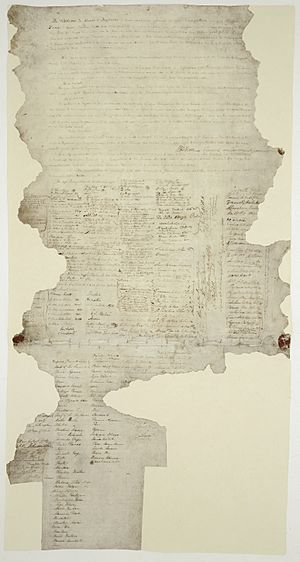William Swainson (lawyer) facts for kids
Quick facts for kids
William Swainson
|
|
|---|---|
| 2nd Attorney-General of the Crown Colony of New Zealand | |
| In office 1841 – 7 May 1856 |
|
| Monarch | Victoria |
| Preceded by | Francis Fisher |
| Succeeded by | Frederick Whitaker |
| 1st Speaker of the Legislative Council | |
| In office 1854–1855 |
|
| Succeeded by | Thomas Bartley |
| Personal details | |
| Born | 25 April 1809 Lancaster, England |
| Died | 1 December 1884 (aged 75) Auckland, New Zealand |
William Swainson (born 25 April 1809 – died 1 December 1884) was an important lawyer and politician in early New Zealand. He became the second Attorney-General of New Zealand, helping to create the country's legal system. He was also the first Speaker of the New Zealand Legislative Council, which was like an early parliament.
Contents
Early Life and Education
William Swainson was born in Lancaster, England, on 25 April 1809. He went to Lancaster Royal Grammar School. After school, he studied law and became a lawyer in 1838.
Journey to New Zealand
In 1841, William Swainson was chosen to be the Attorney-General of New Zealand. This was a very important job, like the chief legal advisor for the government. He sailed to New Zealand on a ship called HMS Tyne.
On the ship, Swainson traveled with two other key people for New Zealand's future laws: William Martin, who would become the first Chief Justice, and Thomas Outhwaite, who would be a court official. While sailing, these three men started planning a new set of laws for the new colony of New Zealand. They wanted the laws to be simple and easy to understand.
Building New Zealand's Laws
After arriving in New Zealand on 25 September 1841, Swainson and his colleagues quickly got to work. Within six months, they had helped pass 19 new laws. These laws created the basic rules for how the new colony would be governed.
Swainson often spoke up for the rights of Māori, especially when settlers tried to claim their land. He was involved in discussions about the Treaty of Waitangi, which had been signed in 1840.
In November 1845, George Grey became the new governor. Swainson, Martin, and Grey worked together to write parts of the New Zealand Constitution Act 1852. This was a very important document that set up how New Zealand would be governed.
Swainson continued to be the Attorney-General until 1856. After that, New Zealand started to govern itself more, and he was replaced by Frederick Whitaker.
Political Roles
On 26 May 1853, William Swainson was appointed to the New Zealand Legislative Council. This was like the upper house of New Zealand's parliament. He became its first Speaker on 16 May 1854. The Speaker is the person who leads the meetings and makes sure rules are followed. He held this role for over a year. Swainson remained a member of the Legislative Council until 1867.
Friendship with Māori
William Swainson had a strong connection with Māori people. He bought land in Auckland and built his house there. A hospital that treated Māori was built nearby.
A Māori man named Mohi Horowhenua te Puatau became a close friend of Swainson. Mohi worked for Swainson as a boatman and handyman. He stayed with Swainson for the rest of Swainson's life, even traveling with him to important meetings. Swainson even called Mohi his "old friend" in his will.
When Mohi was very old and sick, Governor George Grey visited him every day. Mohi was buried near Swainson's grave, showing their close bond. William Swainson died in Auckland on 1 December 1884. He never married.
Church Work
Swainson also helped with the church in New Zealand. He worked with Bishop Selwyn to create a plan for an independent church in New Zealand, connected to the Church of England. In 1866, Swainson became a chancellor for the Anglican Church in Auckland.
See Also
William Swainson is sometimes confused with another person named William Swainson, who was a naturalist and also came to New Zealand in 1841.


